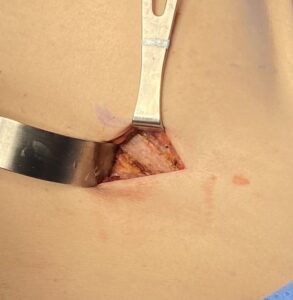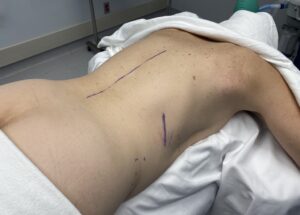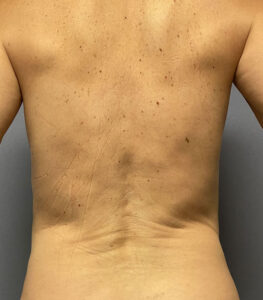Background: Of the different body changes that a transfemale desires having a non-straight body figure is important. There are numerous ways to achieve that effect from breast and hip augmentation to abdominal/flank liposuction. But when those options have been exhausted or negated the last remaining procedure to consider is waistline reduction by rib removals.
There are numerous misconceptions about rib removal surgery from it being dangerous to having a high rate of complications. The reality is, however, those are falsehoods based on perception not actual clinical experience. In my extensive rib removal surgery experience safety or complications have not been an issue. The most important consideration is effectiveness…how effective will it be for achieving the patient’s goal. Removing ribs is perfectly safe and has far fewer potential complications, for example, than a traditional tummy tuck.
In rib removal surgery treating ribs #11 and #12 is expected with no consideration for any organ involvement. (lung or kidney) The free floating ribs are unattached for a reason as their ends are the location of n umerous abdominal wall muscle attachments. Rib #10 is different as its muscle attachments, the diaphragm, posterior serratus, internal/external/transverse abdominals, iliocostalis and the intercostal muscles, begin to involve functions that do not involve the waistline. Pertinently the lower end of the lung (pleura) comes into proximity at rib #10 level. For this reason while taking part of rib #10 is desirable, this may not be advisable to avoid the risk of a pleural tear. This is a decision that has to be made intraoperatively. In addition, in some patients rib #10 is far north of the incision and the angle to get to not makes it more risky to do so.
Case Study: This transfemale sought body changes for a more narrow waistline and shoulder shape. Due to recovery concerns these body changes were staged with the rib removal being done first.

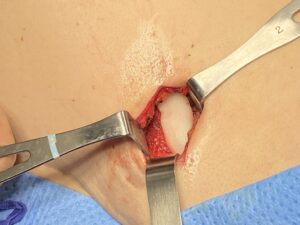
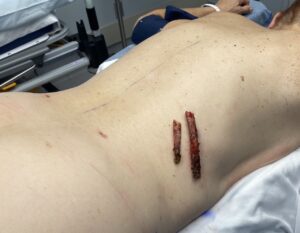

Case Highlights:
1) In the transgender male top female patient changing a straight line or boxy body shape is the primary goal.
2) While the width of the attached rib cage can not be changed the free floating rib width can be reduced.
3) While rib #10 is also the goal to reduce along with ribs #11 and #12 this is not always possible due to the proximity of the pleura of the lung.
Dr. Barry Eppley
World-Renowned Plastic Surgeon



